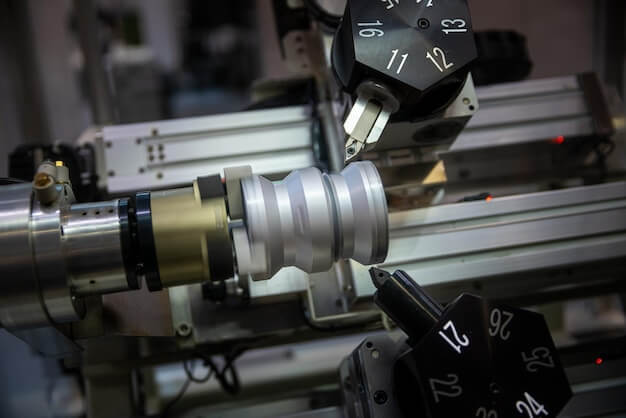Introduction to CNC Machining and Surface Roughness Problems
The process of Computer Numerical Control (CNC) machining plays a vital role in the manufacturing industry. This automated process uses computers to control machine tools, ensuring precision and efficiency in production. However, one common issue faced within this sector is the surface roughness problem. The surface finish of an end product produced via CNC machining can be negatively impacted by factors such as improper tooling selection or inappropriate operating parameters.
China Online CNC Machining Service
Rough surfaces impact not only the aesthetic appeal of products but also their functionality and durability. An uneven surface could lead to friction issues, part-to-part mismatching, and premature product failure. Understanding the root causes and impacts of this problem allows for proper troubleshooting and improves the overall CNC machining results.
Definition of Surface Roughness
In the realm of CNC machining, surface roughness refers to the unevenness or irregularities found on the external layer of a machined object. These inconsistencies might vary from fine lines and scratches to more prominent bumps or gouges. The condition arises due to multiple factors such as the material’s inherent qualities, applied technique, tool type used, cutting speed, and feed rate.
An apt example to demonstrate this concept would be sandpaper against a wooden block. Consider sliding different varieties of sandpapers across it. Some papers scratch the surface gently producing a smooth finish, akin to the effect of a fine-tool with low cutting speed in machining. Conversely, coarse sandpapers cause substantial shavings and indents mimicking a scenario where a dull tool at high cutting speeds is employed in CNC operations. Thus, understanding surface roughness can help improve accuracy and quality in CNC machining projects.
Detailed Examination of the Causes of Surface Roughness Problem in CNC Machining
Surface roughness problems in CNC machining can be caused by various factors, including:
- Improper cutting parameters such as cutting speed, feed rate, and depth of cut
- Tool wear or improper tool selection
- Inadequate machine rigidity or stability
- Poor material quality or inconsistencies
Solutions for Surface Roughness Problems in CNC Machining
The quality of the surface finish in CNC machining is crucial, and addressing problems related to surface roughness are vital. One way to reduce surface roughness is by maintaining and replacing tools regularly. Dull or damaged tools can lead to increased friction and heat, resulting in a rougher surface finish. Therefore, proper and regular tool maintenance ensures they remain sharp and efficient, leading to smoother results.
Finding the optimum cutting parameters is equally essential. These include the spindle speed, feed rate, depth of cut among others. Optimizing these factors helps in reducing excessive cutting forces that adversely affect the finished surface. For instance, too high a feed rate may generate more heat and pressure causing deformations on the machined part.
Lastly, choosing the correct machine geometries also plays a key role in ensuring smooth surfaces. Machine geometries like the rigidity of the workpiece setup, alignment of the cutting tool with respect to the workpiece, can dramatically impact surface quality. Incorrect geometrical set up might introduce vibrations during the operation making it difficult to attain a smooth output.
Extra Tips to Prevent Surface Roughness in CNC Machining
Remember, proper maintenance of your CNC machine is essential. This includes regular inspection and timely replacement or repairing of worn-out parts which helps maintain the machine’s effectiveness and prevents deterioration resulting in surface roughness problems. Machine operators should be well-trained to identify potential errors promptly, reducing chances of overheat, excess vibration or imprecise cutting that may lead to substandard workpieces.
- Maintenance: Regular check-ups enhance longevity and ensure optimal operation, significantly decreasing incidences of surface roughness.
- Training: Proficient operators are crucial as their accuracy and efficiency directly influence the quality of final product including its smoothness.
- Quality Control: Implementing stringent quality control measures like frequent assessment, calibration of tools and adopting best practices can preempt surface roughness issues with adequate foresight and planning.
For instance, a periodical training module for CNC machine operators about correct settings and error detection can prevent minor misalignments turning into significant problems causing surface unevenness later on.
Other Articles You Might Enjoy
- Precision CNC Machining of Steel: High-Volume Production
Precision CNC Machining and High-Volume Production As an integral part of modern manufacturing processes, Precision Computer Numerical Control (CNC) machining brings about unmatched accuracy and consistency in the production of…
- Impact of Surface Roughness on CNC Machined Parts: Material and Process Variables
Introduction to CNC Machining and Surface Roughness CNC machining, abbreviated from Computer Numerical Control machining, is a manufacturing technique that uses pre-written computer software for dictating the movement of factory…
- Surface Refinement: Leveraging Bead Blasting for CNC Machining
In the realm of CNC machining, surface quality plays a pivotal role in determining the overall performance and aesthetics of the final product. Leveraging bead blasting as a surface refinement…






